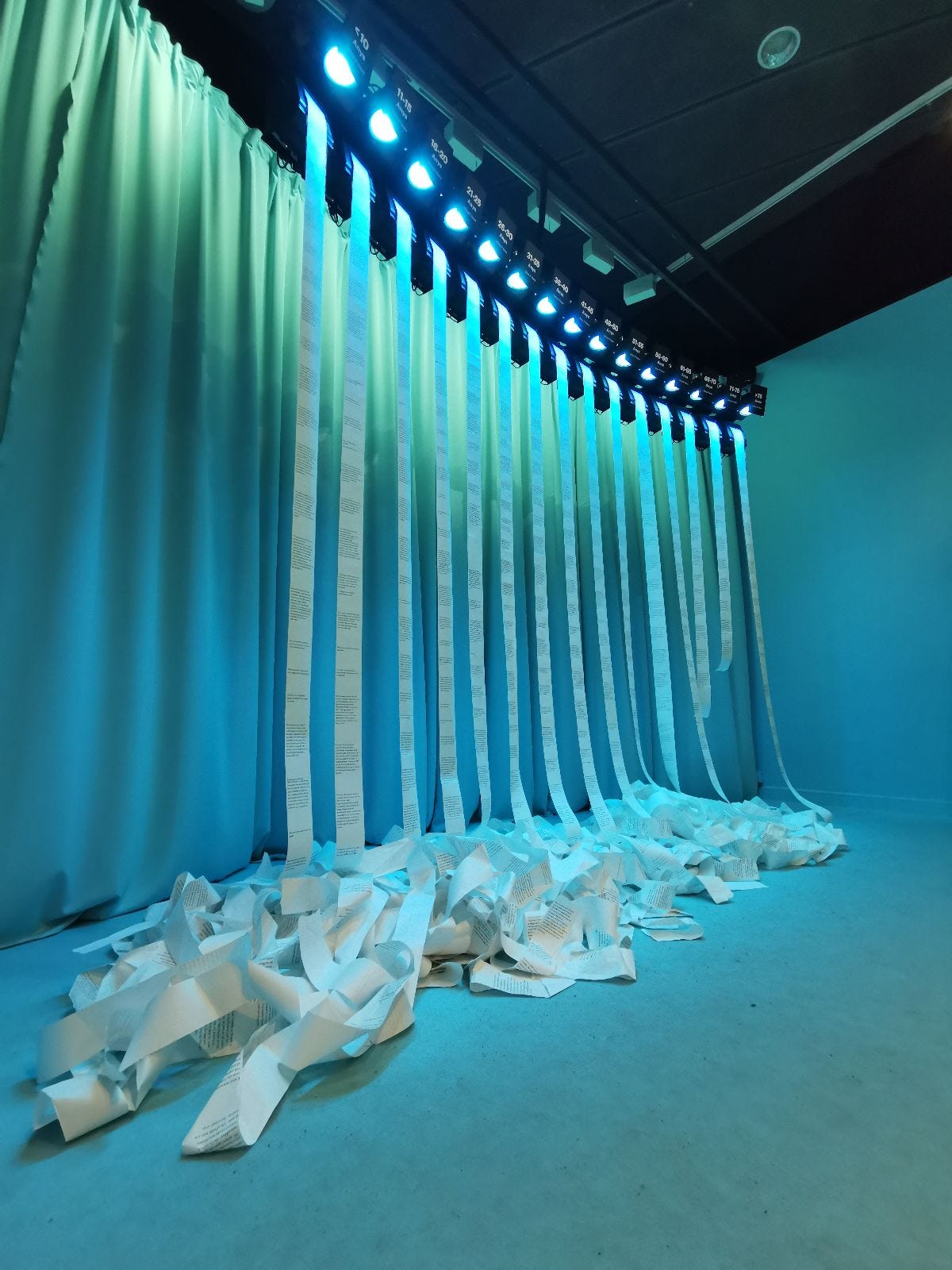In the middle of a pandemic, the exhibition “You Had to be a Feminist” in Barcelona was seen by over one thousand new visitors every day
In December 2020, 80 days after its opening, the exhibition “You Had to be a Feminist” in Barcelona reached 78k visits. A very impressive number considering the odds: there was a pandemic going on, the regular affluence to the cultural center was about quarter of that and, well, it was about feminism: a well-accepted topic on social media but not so much in the streets. Still, we managed to bring over one thousand new people to line up every day. What was the secret?
As part of the creative team I was just as impressed as anybody else. I was working for Domestic Data Streamers, a studio highly specialized in communicating facts. As in any polarized topic, I knew from the beginning that choosing the right things to say would be a huge task: say one thing wrong, and you’ll ruin the story. But hit the right nerves and you’ll get not only visiting records, you’ll also insert the debate in the public agenda.
To add another layer of panic-like challenges, the exhibit was created and executed with the whole team under COVID confinement. Try to brainstorm on salary gap visualizations or answer questions like “should Eve’s apple be real and rot in time or should it be 3m tall and take up an entire room?” through a screen and you’ll learn how post-meeting hugs are mightily underestimated.
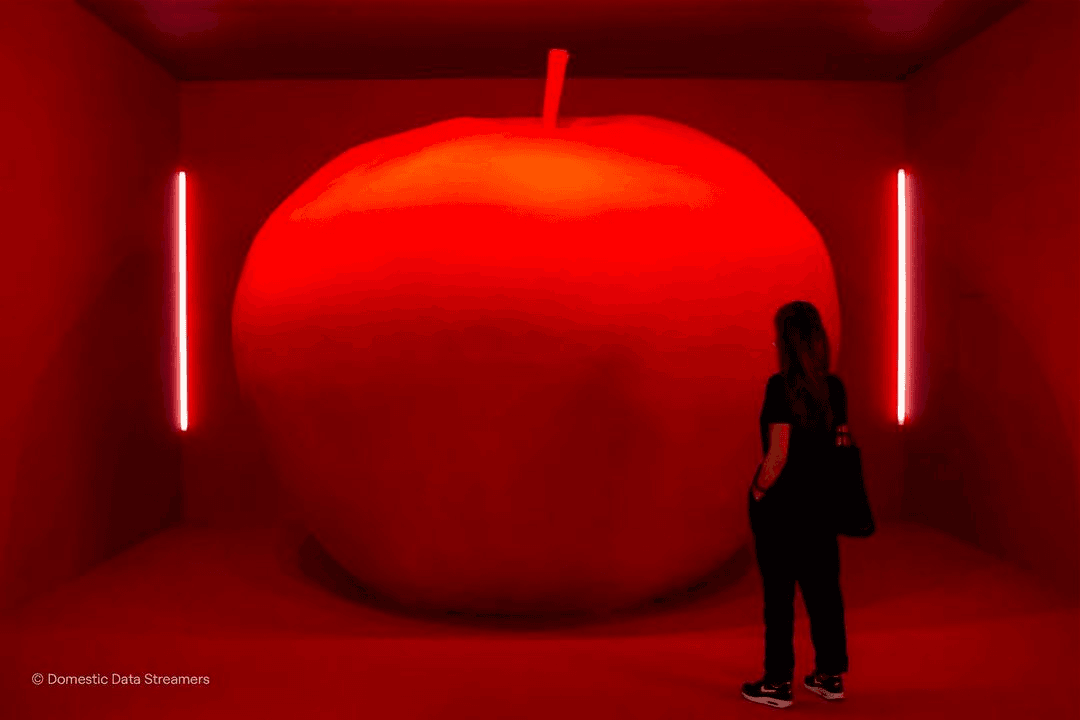
All jokes aside, the project developed wonderfully well, and looking back it’s easy to see the moments in which we made the right calls. So what were they?
Think of people as… people
When curator Natza Farré joined the project she knew we shouldn’t explain what feminism is but tell the reasons why we are feminists. At that time this was a major decision and incredibly smart for such a complex topic. If we tried to explain what feminism is we would run out of space, probably under-deliver and leave people disappointed. By choosing the latter we were able to humanize the narrative, saying things as they really happen instead of lecturing the audience.
Know the data (and no, I don’t mean fact-checking)
There are many great sources for feminist data out there and the numbers are, sadly, devastating. A big chunk of our working hours were invested not to find the numbers but to know which ones to choose. We had to have a criteria, so we came up with two: first, to cover at least 9 of ground level fights (education, pay gap, sexual violence, housework, maternity, glass ceiling, public representation, health and safety).
The second criteria was trickier. Every piece of information should be relatable. That is, every single person visiting the exhibit should be able to connect with it — no matter the gender. This meant that lots of highly relevant data were left out. Cutting things off is never pretty, but ending up with an inconsistent story is probably worse. Curatorship is a work of intention.
Use your words right
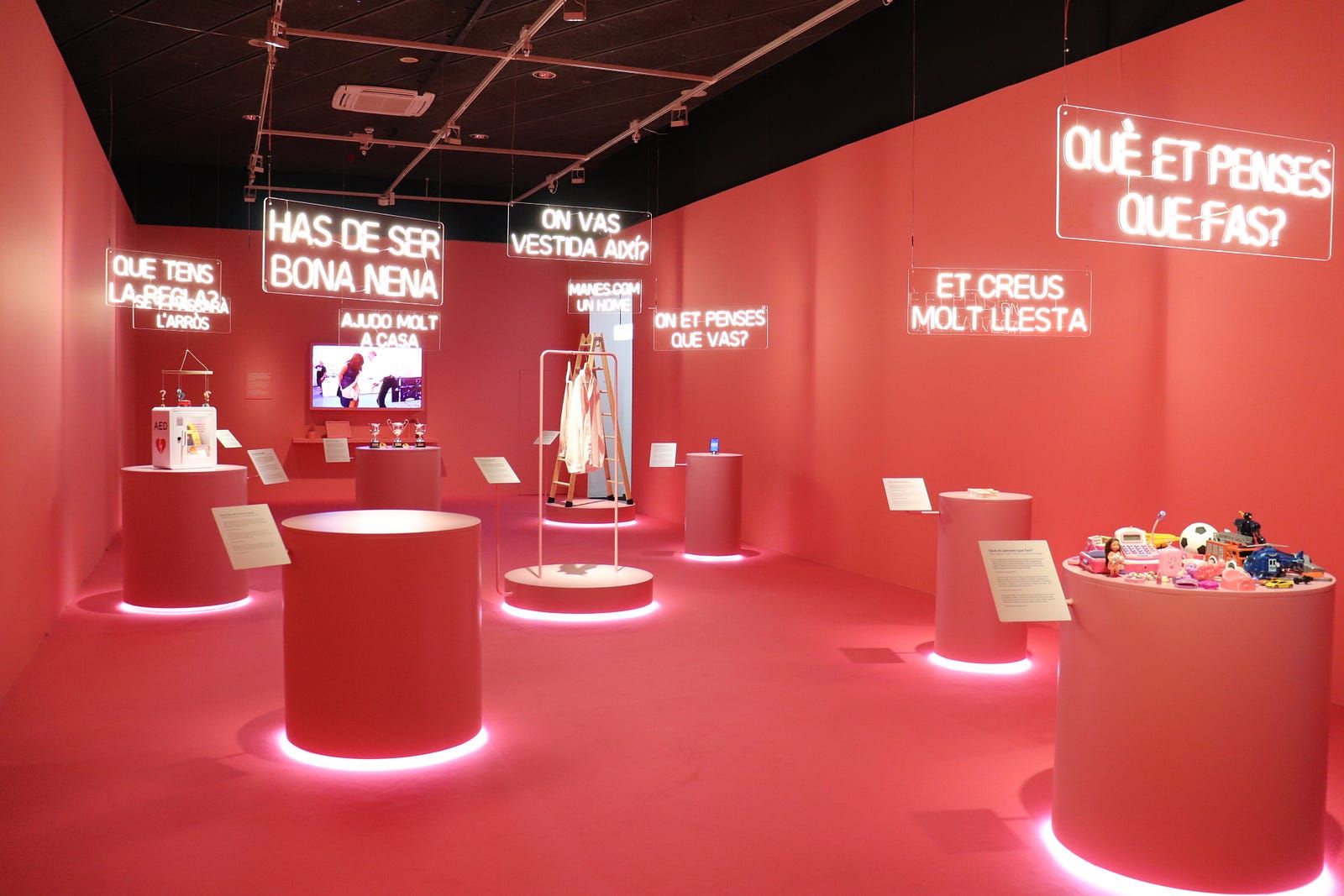
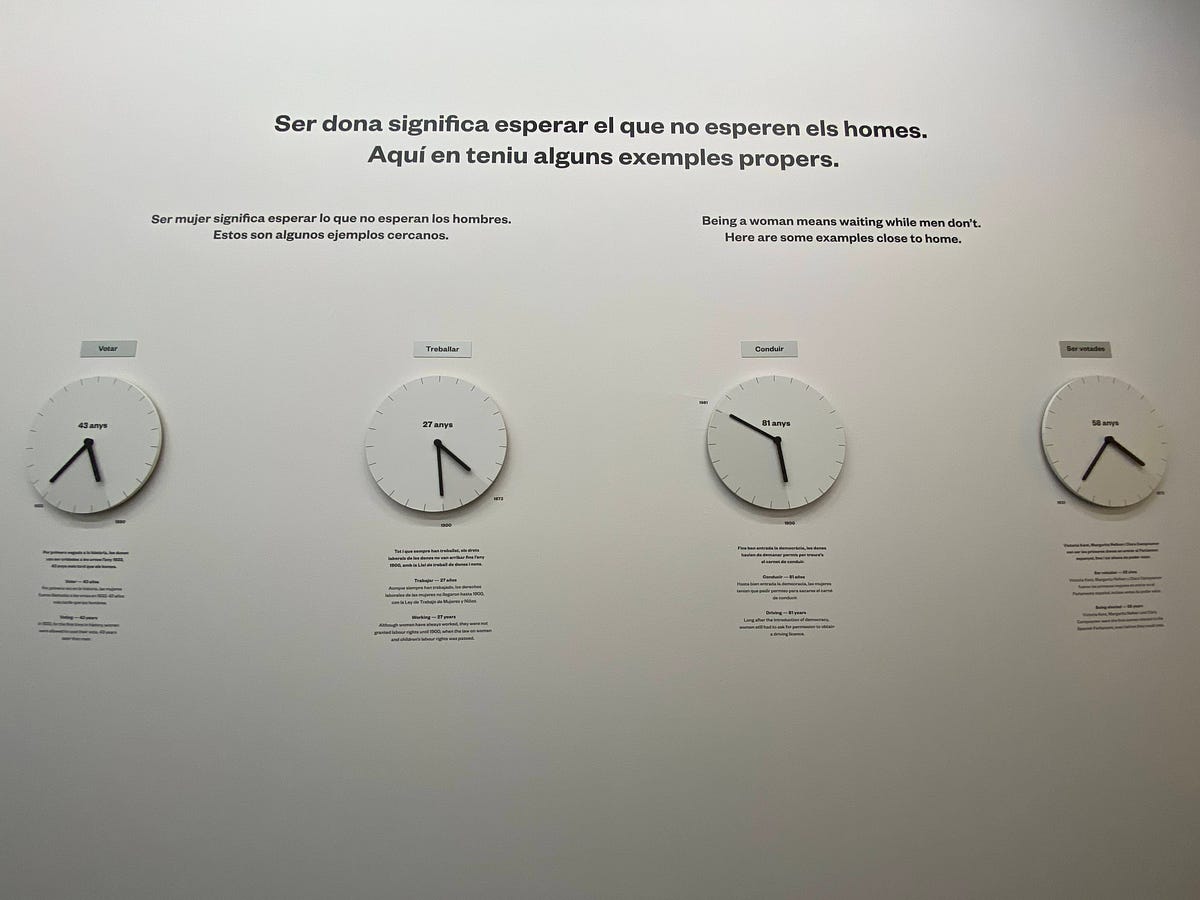
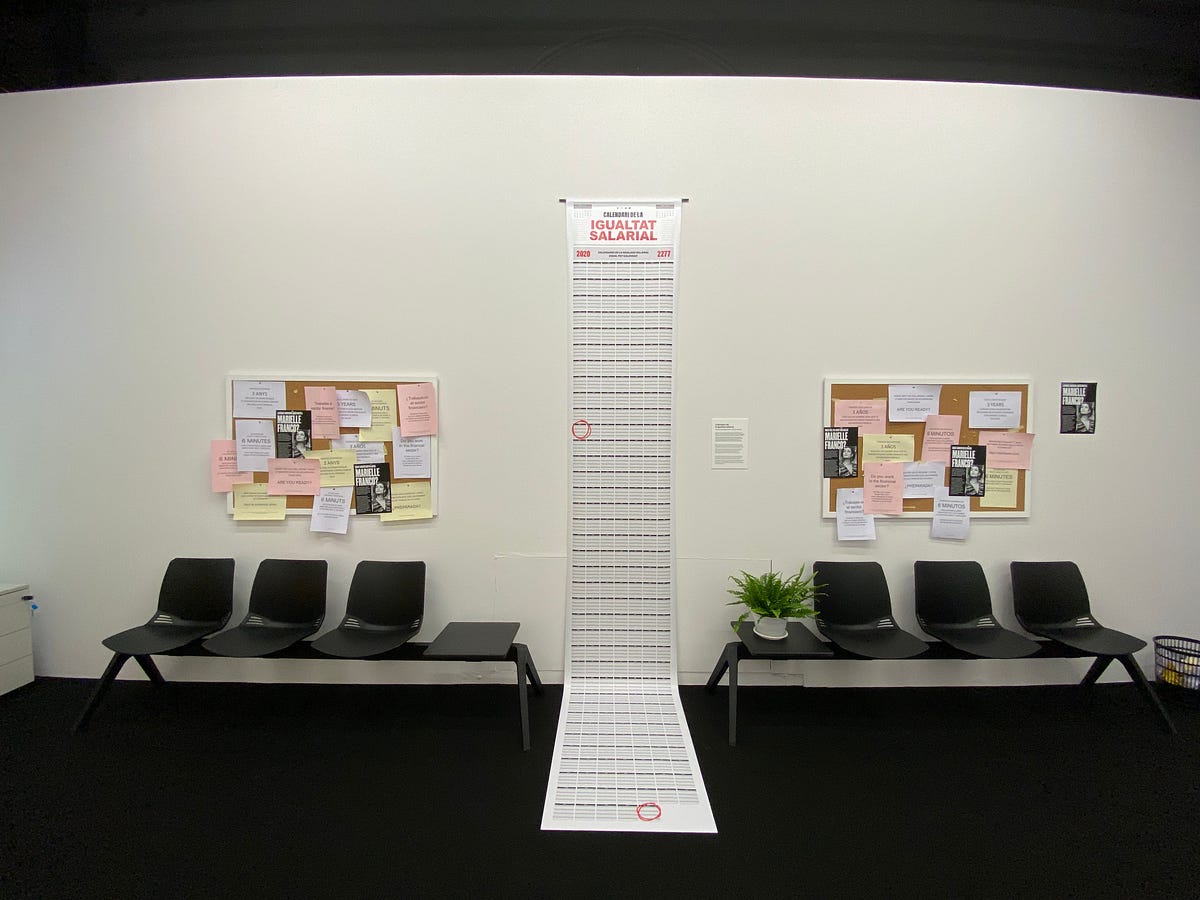
The Achilles heel of all exhibits: write little and be seen as a snob, write a lot and be read by no one. But is that true? In 2020, the sentence “people don’t read” –still proudly announced in the creative world– is nothing but a huge misunderstanding. People don’t read boring stuff. Make it interesting and you’ll be read.
The secret? Text will stop being a problem the moment you embrace the nature of what’s being said: want to show the weight of a misogynist saying? Try hanging it from a ceiling. Want to enhance the power of personal stories? Have people writing their own. Want to denounce the misconception of the “feminazi” insult? Have it built across a wall and then ask people to destroy it. Almost anything is possible in art; use it right and you’ll see how much you can say with very little.
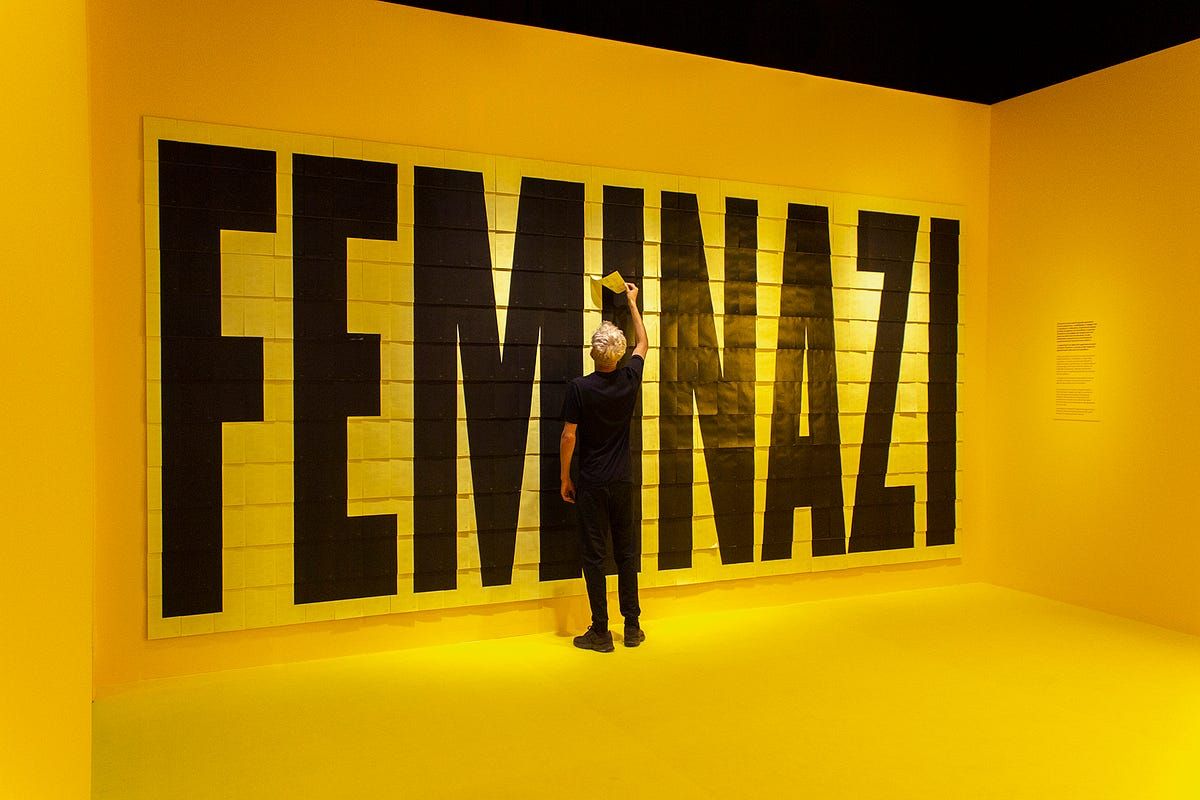
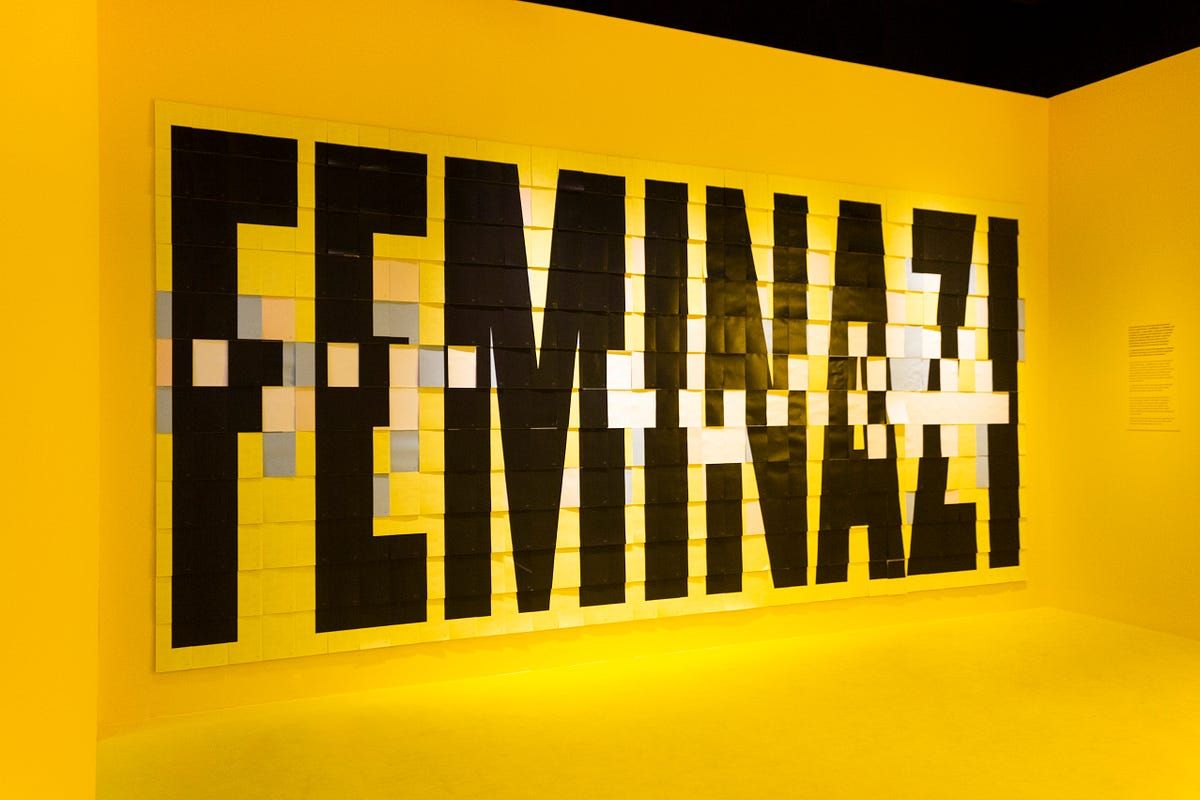
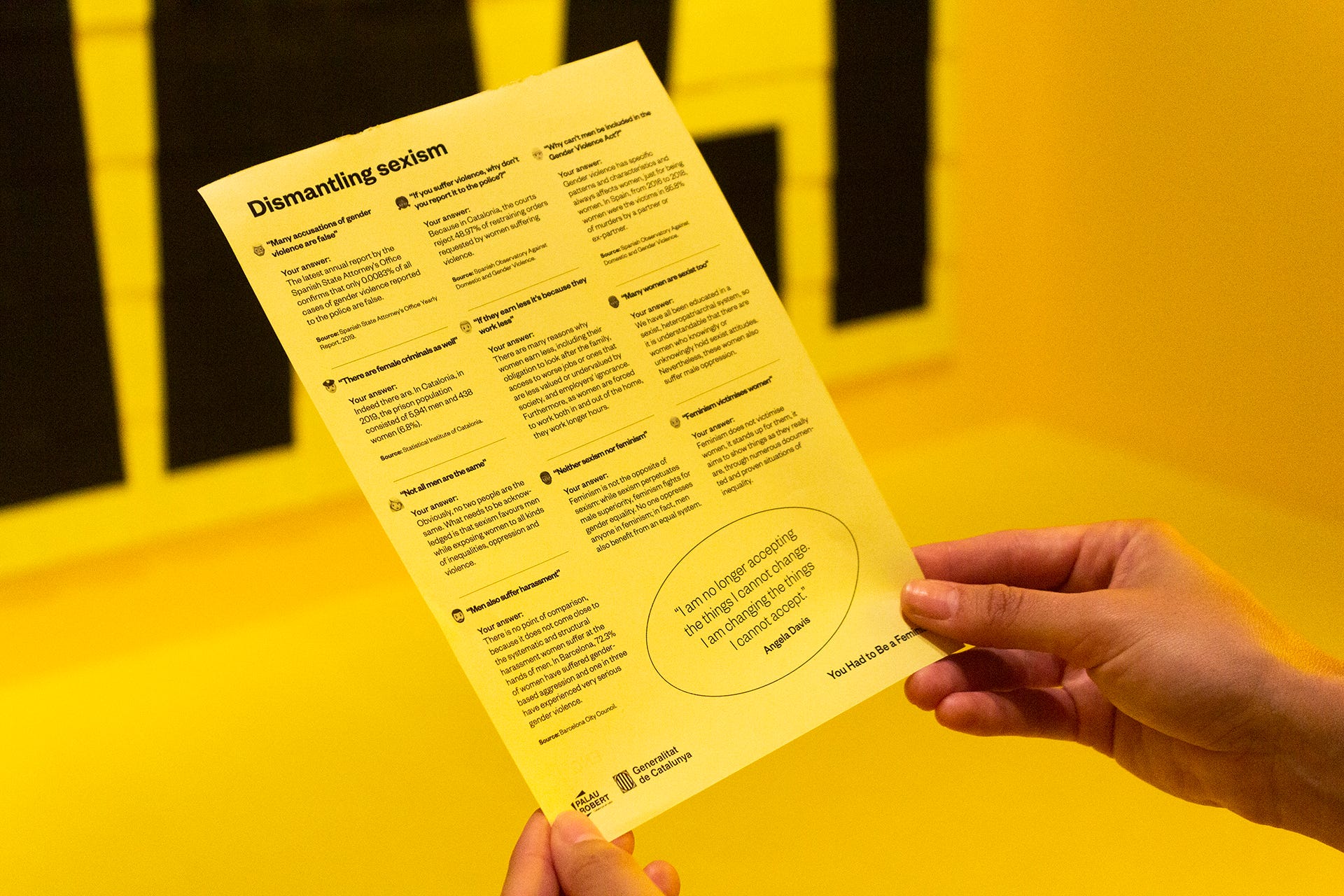
Don’t play God: you don’t hold the truth yourself
If you’re telling a contemporary societal story, chances are that visitors will have their own experiences, interpretations and points of view about it. This is even more truth in feminism, with history being built as we speak. We knew we had to open space for personal stories for two reasons: one, it wouldn’t be right for us to be the only narrator of such a complex debate; and second, people deserve to have their thoughts heard.
We brainstormed on a series of ideas but COVID was blocking every and each physical interaction, so we turned to digital. How could we create a piece to act both as an art installation and an open public dialogue? Marta Handenawer, Director of Experience, had the answer: a tech “waterfall of stories” that allowed continuous flow of content in a very visual way. So we hung 15 mini-printers from the ceiling, ready to print the stories that visitors would send to an online landing page. The printing was anonymous and instantaneous, which means no censorship. Anyone could read what other visitors had to say.
By the end of the exhibition 2,878 stories were published, and the floor was taken by a flood of testimonials. As Marta says, the value of the personal became the value of a collective; and a simple dialogue became a piece of art. (No need to say, the stories were even more heartbreaking than the data. In respect to visitors we will not publish them anywhere else, but we are preparing a data-story about the most frequent topics. Stay tuned).
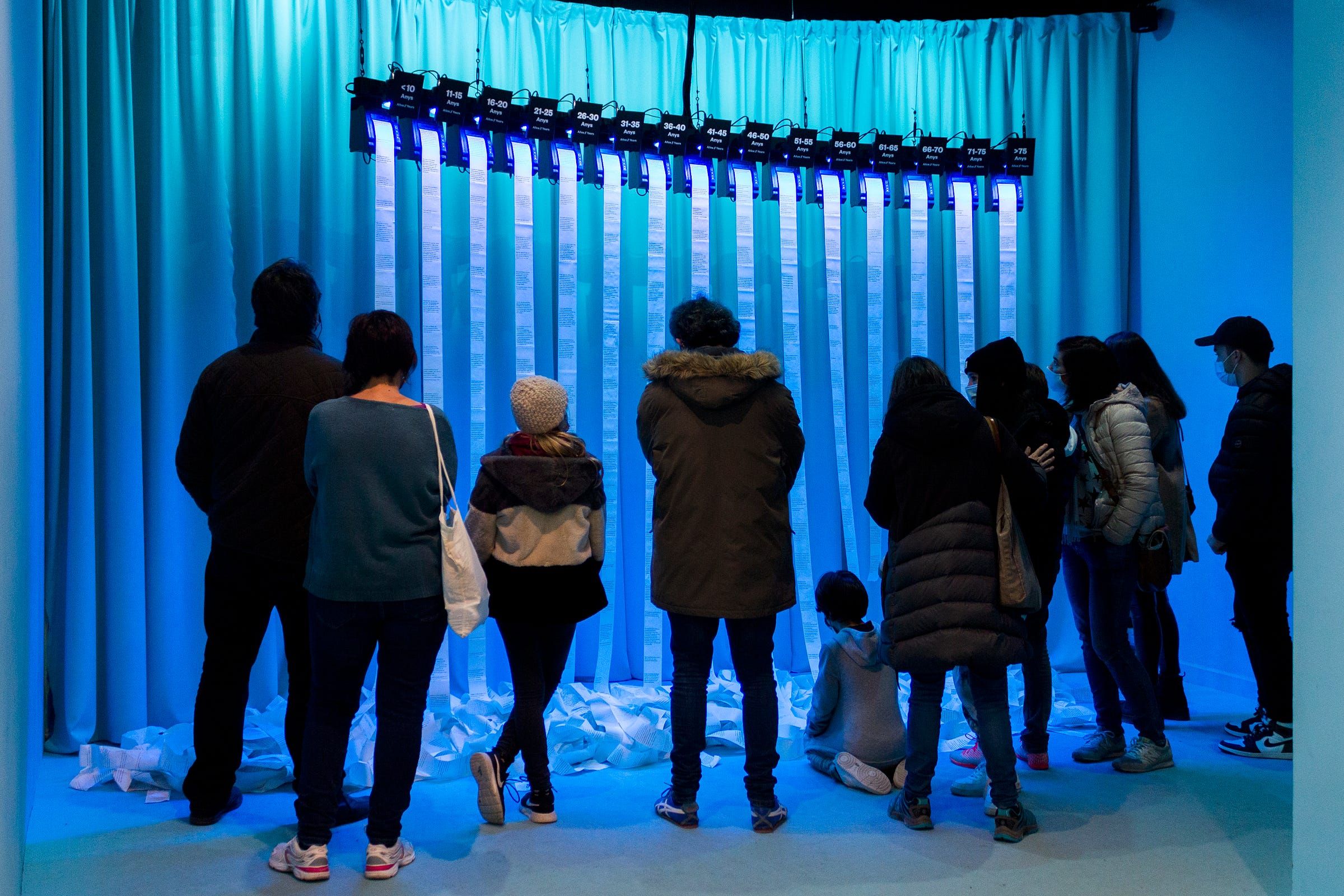
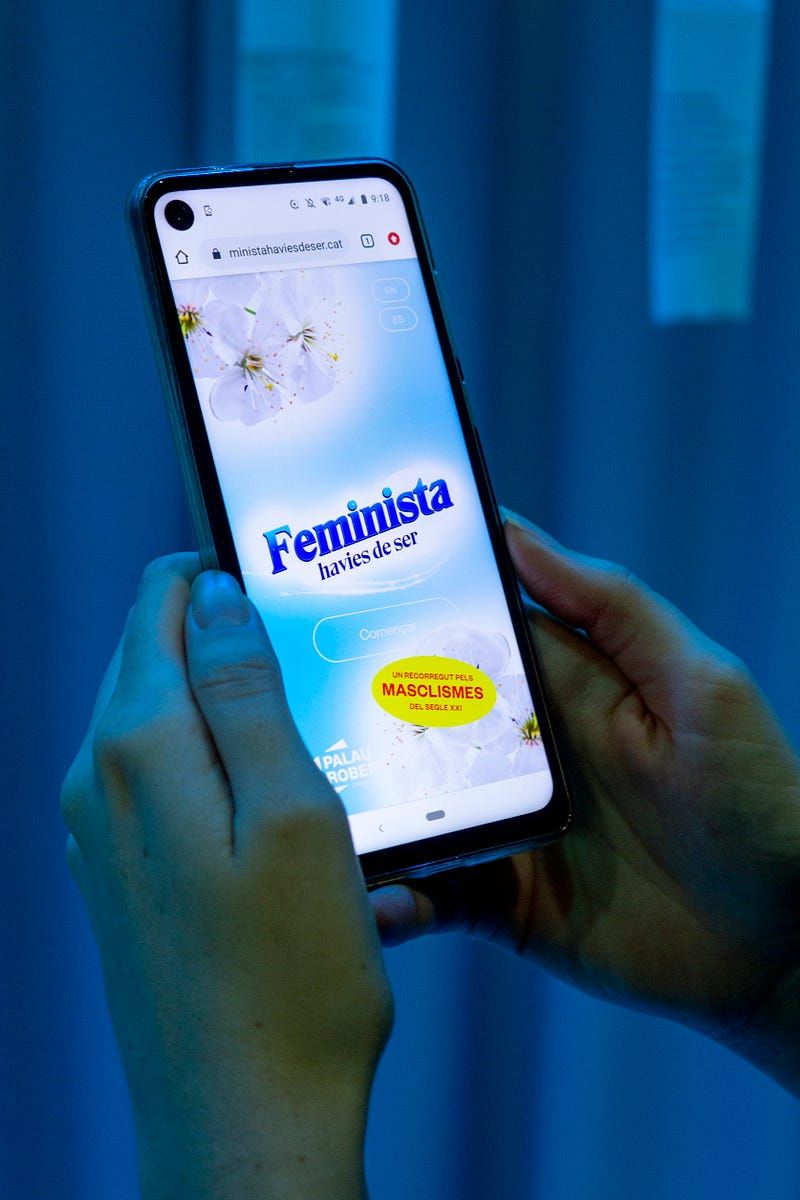
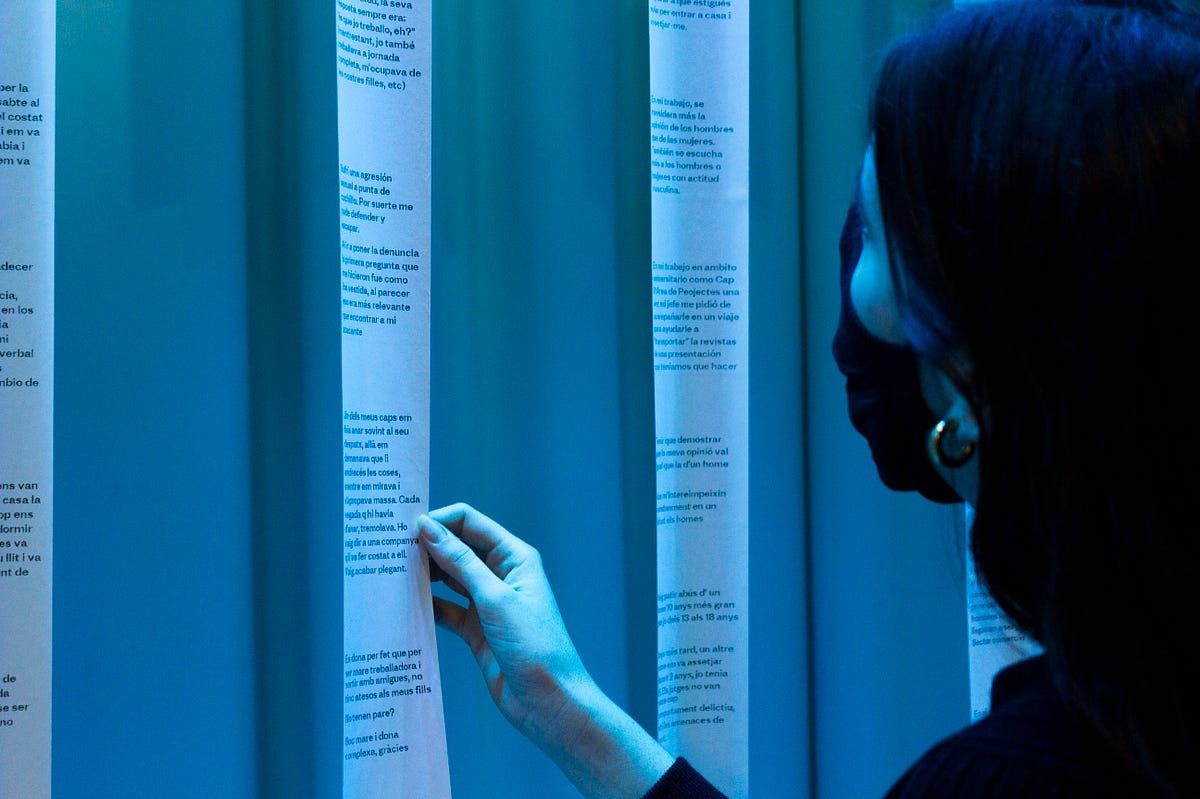
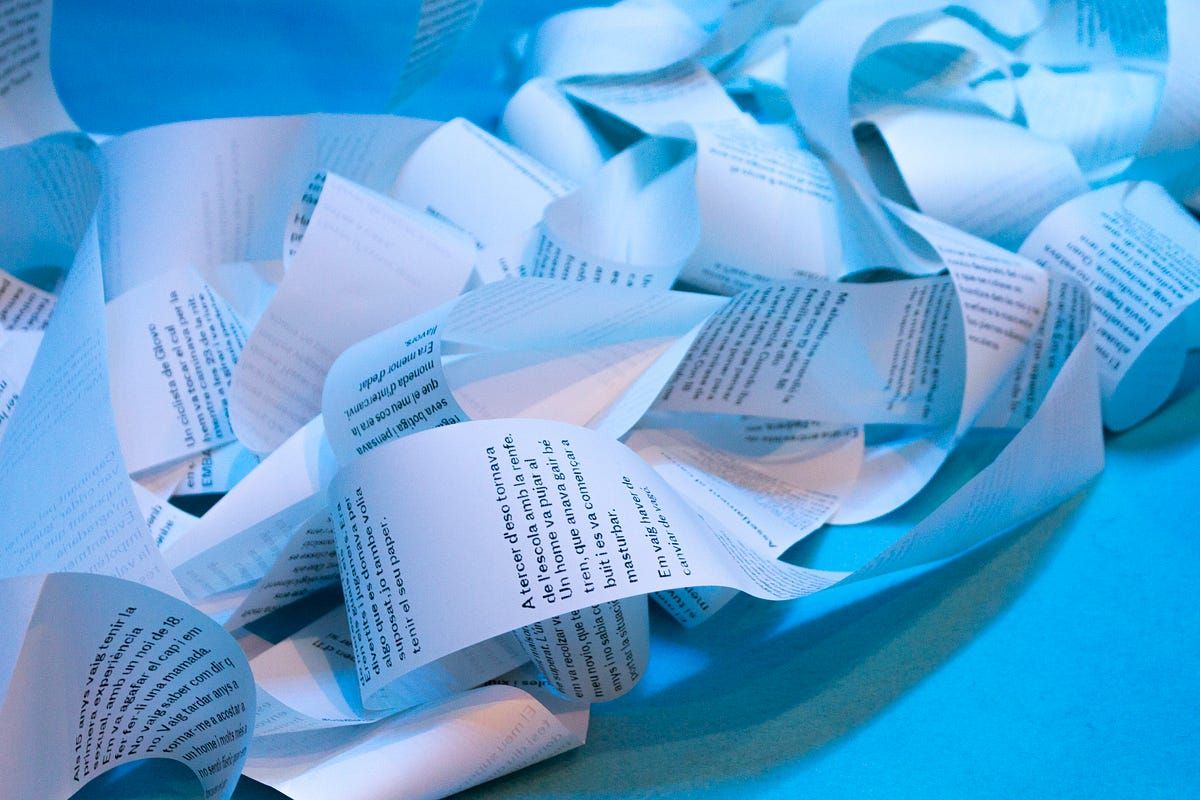

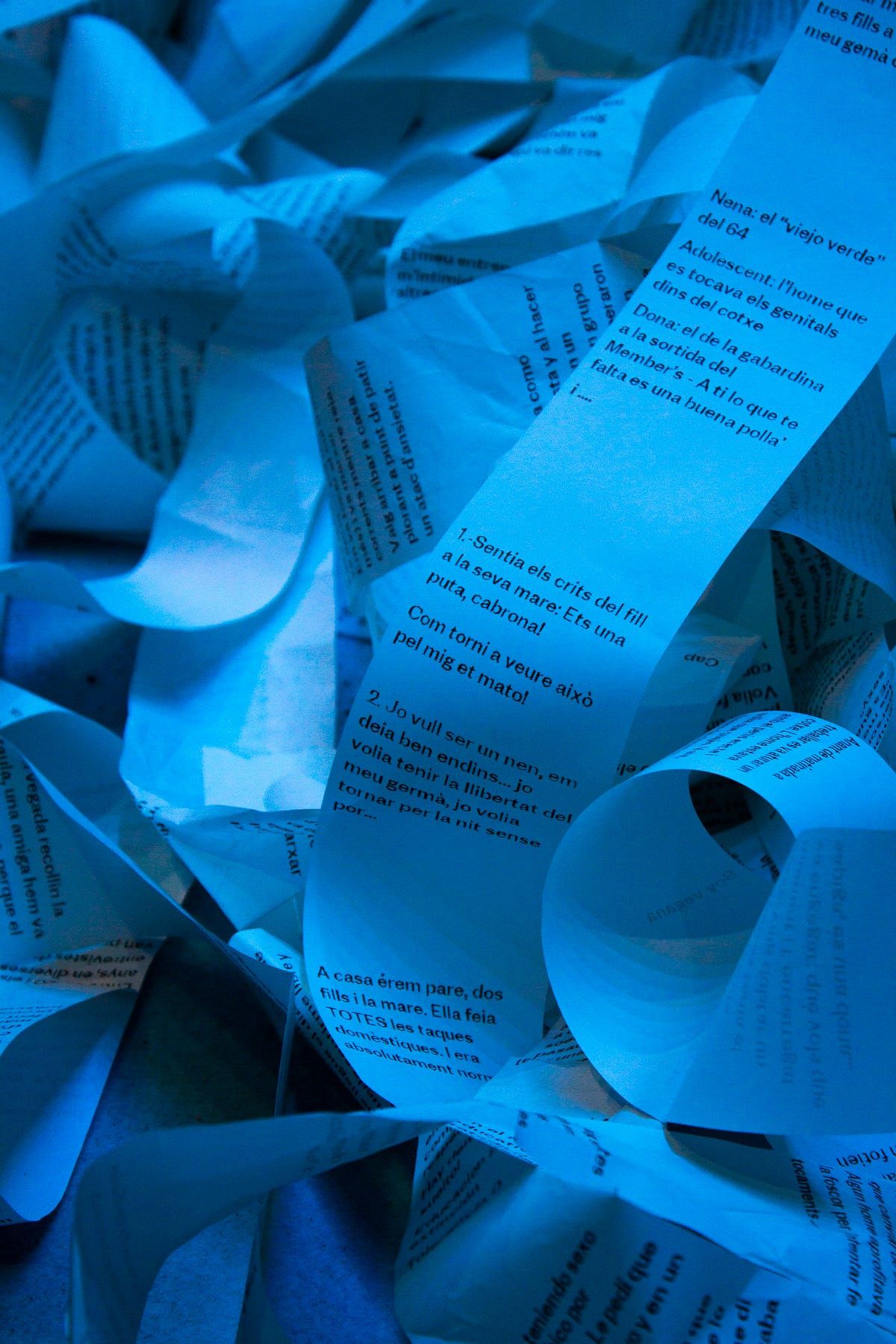
And above all: Feel the story to the bones
It needs to be said: this was a directed-by-women project. Curatorship, research, content, copy, experience, design, management: almost all led by women. Did it make a difference? Absolutely. The stories we were telling were our stories; the data we were showing was ourselves.
Feminism isn’t an easy conversation: it’s emotional, it’s political, it requires a big will to listen, and it’s hurtful. Because it asks for self criticism, and because for as much as you want to comprehend it all, you can’t. You just help build a brick and hope that brick will fall next to another. And another. Until it becomes something else — something different than what it was.
This exhibit was our brick. May there be a million more.
Checkout for more instagram stories
